Investing terms are confusing. Deliberately so, in some cases, because it makes investing seem sophisticated. Funds and stocks and bonds can be referred to as “securities” or “instruments,” which already sounds technical, but then you throw in terms like “derivatives” and “strike price” and “cost basis” and… and… and.
It can be overwhelming.
It’s hard to sift through the noise to even know what you need to know to be a mindful investor. The truth? There isn’t that much you need to know to get a grasp on investing. There’s plenty to learn if you want to play in the deep end of the pool, but for mindful investors like me, slow and steady is the game. As such, let’s define some terms that might help you feel more confident in getting your money to work for you.
Stocks
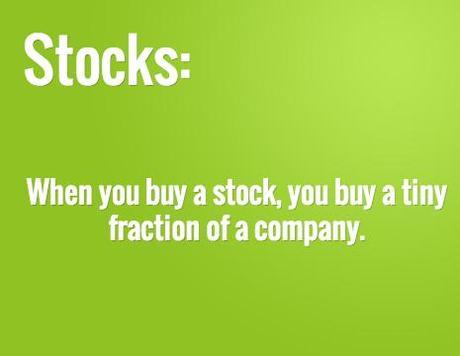
Imagine you start a small business by yourself. You are a 100% owner of your little company, so any money left over after you pay your expenses is 100% yours to keep. In other words, you own 100% equity in your business.
Now, say a local business group sees your company and likes what you’re doing. They’re interested in helping your business grow, so they offer you $25,000 in exchange for 25% of the equity. In short. you have just sold 25% of your company’s “stock” to an investment group. For the sake of simplicity, if you imagine each percentage point of ownership is a single share, then you have just sold 25 “shares” of your company for $1,000 per share, while you still own 75 “shares”.
This is essentially what happens when you buy stock. You are purchasing ownership of the company. While it’s true that your ownership stake in a company’s stock is likely to be tiny (McDonald’s, for instance, has 989 million shares at almost $100 a share, so buying 25% of the available equity would cost you somewhere around $98 billion), you are still officially a partial owner of that company.
Dividends
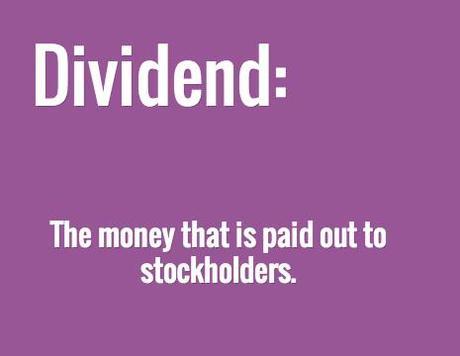
When companies profit, they have a few choices of what they can do with the extra money. They can either re-invest the money in the company to help it grow or they can pay the stockholders– who are the official owners– of the company (there are a few other options, but for the sake of simplicity, we’ll stick to these two choices). The money that is paid out to stockholders is called a dividend.
Dividends can be allocated quarterly or annually, but are paid out on a per-share basis.. So, if you imagine your small business earns a $20,000 profit in a year, an option for you would be to pay out $5,000 (or 25%) as a dividend to the people who bought 25% of your company, and then you take the rest of the profit and re-invest it into your business (and everyone is happy. Hooray!).
Bonds
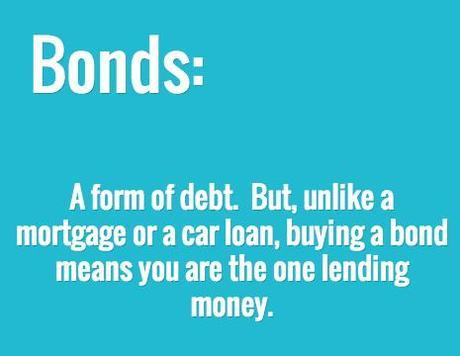
Bonds are a form of debt. But, unlike a mortgage or a car loan, buying a bond means you are the one lending money to the company, quite a reversal for our friends in the personal finance world!
The money you make is based off of the interest on loan to the company, rather than the profits earned by the company. There are bonds that companies sell, and there are also bonds that governments sell. If you buy municipal bonds (also called “munis”), you are lending money to a city government. If you buy treasury bonds, you are lending money to the US federal government. The interest rate on the bond is inversely related to how likely the company is to default on the loan. In other words, the higher the interest rate on the bond, the riskier the investment is.
Commodities

A commodity is a physical good. What makes it a commodity is that it doesn’t really matter who the supplier is, it has the same value. For instance, if you buy sugar as a commodity, then it doesn’t matter which sugar you get. From a commodity market standpoint, sugar is sugar.
An investment in a commodity is called a “future.” Simply put, the grower of the sugar says they will deliver the sugar in six months, and the buyer agrees to pay a fixed price, say $400 for a ton of sugar (or $0.20 per pound), on that date regardless of what the market price is at that time. Now, imagine the market price of sugar is $0.25 per pound in six months. Before the owner takes delivery, they can sell the contract the contract for $500 and pocket the difference (but if the owner of the contract doesn’t sell it, then they’ll have a ton of sugar at their doorstep!). Since commodities don’t pay dividends or interest, investing in them is much more speculation. The original concept behind commodity futures was to create stable pricing scenarios for organizations that tend to buy or sell large quantities of the commodity.
Index
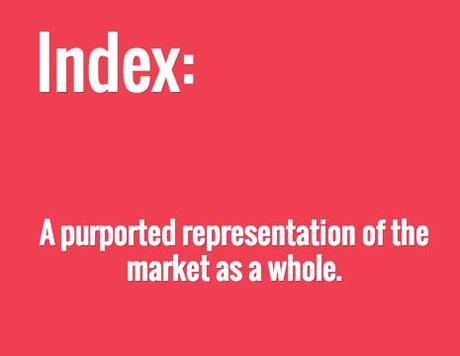
You’ve probably been listening to the radio on the way in to work and heard a report that says something like “at last check on Wall Street today, the Dow is up 38 points, and the S&P 500 is up seven.” The values are referring to the Dow Jones Industrial Average (DJIA) and the Standard & Poor’s 500– stock indices.
An index is a purported representation of the market as a whole. The Dow is make up of 30 stocks that are considered a representative cross section of every stock you can buy from the New York Stock Exchange or the NASDAQ. The Dow changes over time, too, so if your stock starts to stink, it can be removed from the Dow. General Motors, for example, was a component of the DJIA from 1915 until 2009, replaced by a healthier company after the government bailout. The S&P 500 is a weighted composite of 500 large companies, and its larger cross section of companies is seen as “more representative” of the market as a whole than the Dow.
Mutual Funds

If you’re investing in stocks or bonds, it stands to reason that you might not be very comfortable putting all your money into a single company. You’ve heard that you need to “diversify your portfolio.” Well, that just means buy more than one thing. So, instead of buying a single stock, you might buy five or ten or more. But doing the research, and finding out which stocks to buy, is very time consuming. The solution: mutual funds.
A mutual fund is a group of stocks or bonds (or both) selected by somebody in an attempt to maximize the value while minimizing the risk of losing money. There are all sorts of mutual funds based on a wide swath of criteria. Want to invest in up-and-coming technology companies? There’s a mutual fund for that (dozens, actually). How about large energy companies? There are funds for that, too. The upside of mutual funds is they allow you to invest in a large number of companies while doing far less research than if you identified and bought all the investments that make up the fund.
Now, most mutual funds have people who make decisions about which investments to have in the fund. I mean, somebody has to identify those small tech firms to determine which are good ones to invest in, right? And if one stock starts to look bad, the manager might decide to trade it out with another one. This is known as an “actively-managed” fund.
Index Funds
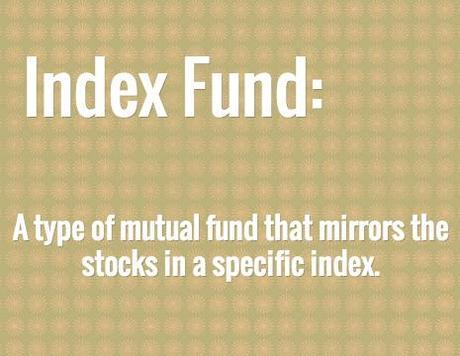
If you poke around various blogs in the personal finance world, you’re bound to come across several pieces of advice telling you to focus on investing in Index Funds. An index fund is a type of mutual fund that mirrors the stocks in a specific index. A favorite of index fund advocates is Vanguard Total Stock Fund (VTSAX), which tracks the MCSI US Equity Index (this just means it is made of up almost every stock that you can buy in the US, so buying a share in VTSAX is essentially buying a teensy-weensy piece of every single company in the country). There are also index funds following the S&P 500, among others. Since these funds have a very rigid set of rules (for VTSAX, the rule is “BUY EVERYTHING!”), there aren’t any decisions being made by people managing the funds. Index funds are also known as “passively-managed” funds.
And More to Come…
There’s a lot more out there. If you’re braving the choppy waters of individual stock investing, you’re going to want to familiarize yourself with sector-appropriate P/E ratios, 10K’s, and more. And what exactly are options? We’ll explore these (and more!) later.

